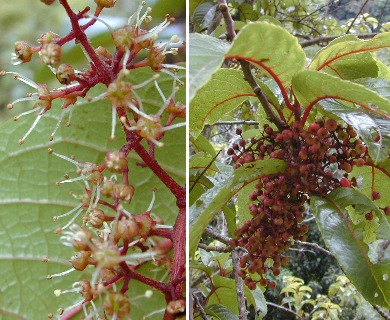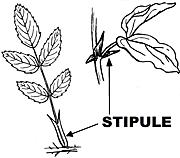Olomea
Perrottetia sandwicensis
Shi Chi Hua Ke family (Dipentodontaceae)
Native species ()
This species, widespread in wet forests through the Hawaiian Islands, is the only native species of its family. It is an shrub or small tree to 23 ft (7 ) high, with finely pinkish tinged elliptical leaves. The bark is gray, smoothish to finely fissured; inner bark gray, slightly bitter. Branches are sometimes long and drooping. Twigs green or reddish, hairless or nearly so, ending in small hairy buds of 1⁄8 inch (3 ), composed of tiny pointed or that fall early.

©2003 Forest And Kim Starr
Flower clusters () at leaf bases, 1 1⁄2–4 inches (4–10 ) long, much branched. Flowers are many, very small, of one or both sexes (polygamo-), short-stalked, 1⁄16 inch (1. 5 ) long and broad, greenish red, composed of five pointed reddish tinged five orange green pointed petals; five from a with petals, much longer and spreading widely (short in female flowers); and with two-celled and short two-forked
() round and slightly flattened, 3⁄16 inch (5 ) in diameter, bright red, juicy, with at base and black at Seeds 2–4, 1⁄16 inch (1.5 ) long, rounded, shiny green, smooth, sticky.
The wood is described as golden brown with reddish tint, moderately hard, and straight grained. Hawaiians made fire by friction by rotating a piece of this hard wood on a piece of the soft wood of hau (Hibiscus tiliaceus).
The trees are attractive in October and November, bearing numerous clusters of drooping red berries. Fairly common in moist wet forests at 1000–6000 ft (305–1829 ) altitude, throughout the islands.
Special areas
Kokee, Haleakala, Volcanoes
Range
Hawaii only
Other common names
waimea, pua’a olomea
This honors George Samuel Perrottet (1793–1870), Swiss-born French botanical explorer, and contains about 15 species scattered from tropical America to Asia.








